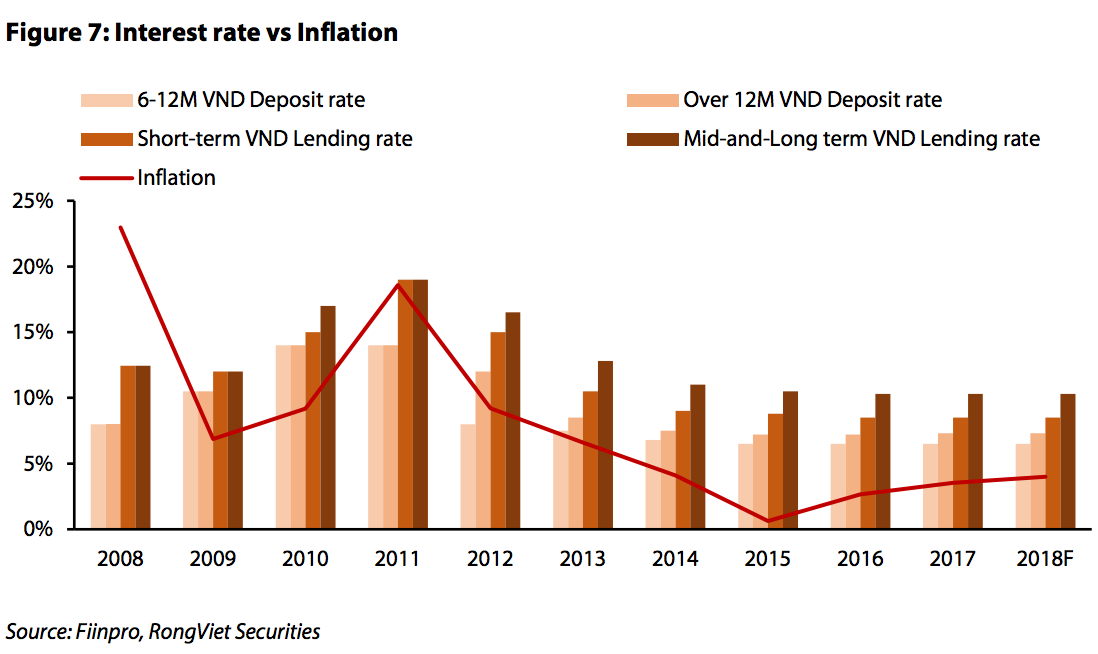Brokerage sees higher interest rates in Vietnam in 2019
In the US, there are likely two more interest rate hikes in the latter part of 2018 as inflation is close to the FED target. The FED’s objective is 3.5% for the benchmark rate by the end of 2019. The European Central Bank (ECB) will close its asset purchase program by 2018 while the Bank of Japan (BOJ) is likely to reset its inflation and monetary policy targets.
In addition to the US Dollar appreciation, oil price hikes as well as trade tension risks, the pressure on rising borrowing cost is spreading out and threatening the financial stability as well as credit quality in many countries. High foreign currency denominated debt countries are vulnerable to global tightening monetary policies. Various countries have started to raise their benchmark interest rates to fight against inflation and investment outflows.
In Asia, India lifted its interest rate for the second straight time in 2018. In ASEAN, four big-GDP countries, including Singapore, Indonesia, Malaysia and Philippines, decided to tighten financial conditions while Vietnam and Thailand haven’t yet taken actions.
On the front of internal risks, there is no doubt that a higher inflation directly creates upward pressure on interest rates. Inflation has been on an uptrend after bottoming at close to 0% in 2015. Higher oil and food prices are partly responsible for rising prices in general. Trade tariffs could also potentially boost inflation.
In 2018, inflation is estimated at 4% year-on-year, the highest level since 2014. Currently, the discount rate dropped to 4.25% per annum from 4.5% per annum in July 2017 while the 6-12-month deposit rate stood at 6.5% per annum.
In addition to inflation pressures, the depreciation of the dong also threatens Vietnam’s low interest-rate environment. Up to the middle of August 2018, banks’ trading FX rate has risen by 2.7% year-to-date while the central FX rate added 1.2%. Notably, the free FX rate increased by approximately 4%.
The policy sets the USD deposit rate at 0% while the USD short-term lending rate is around 2.8 – 4.7 %/year. In order to make the dong more attractive, the VND deposit interest rate is set above the sum of the dong’s depreciation and the USD deposit interest rate. That means pressure on VND interest rates.


 English
English




